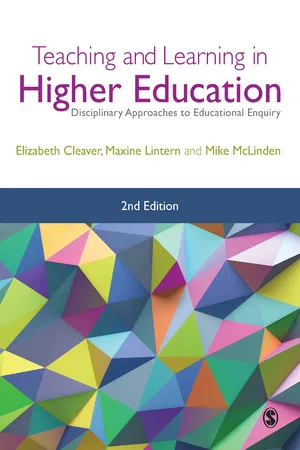Technology & Engineering
Algebra Engineering
Algebra engineering involves the application of algebraic principles and techniques to solve engineering problems. It encompasses the use of algebraic equations, functions, and mathematical models to analyze and design engineering systems. This field plays a crucial role in various engineering disciplines, including electrical, mechanical, and civil engineering, by providing a foundation for problem-solving and optimization.
Written by Perlego with AI-assistance
Related key terms
1 of 5
3 Key excerpts on "Algebra Engineering"
- eBook - ePub
- Wayne A. Wickelgren(Author)
- 2012(Publication Date)
- Dover Publications(Publisher)
11Problems from Mathematics, Science, and Engineering
This chapter is designed to establish the generality of the problem-solving methods discussed throughout the book. In previous chapters, the problems used to illustrate the methods were deliberately selected so that they could be solved by the reader with no more background than a high school student with one year of algebra and one year of plane geometry. Many of the problems were of the puzzle (or brain teaser or recreational mathematics) variety, which require no specialized knowledge of mathematics, science, or engineering. Although methods for solving such problems have some recreational interest, there is also a serious practical reason in mastering them, for they are also useful for solving serious problems in all areas of mathematics, science, and engineering. This chapter is designed to demonstrate this applicability and to give the reader some experience in it.ALGEBRA
The solution of systems of simultaneous linear equations provides a simple example of the use of evaluation functions, hill climbing, and subgoals. As an example, consider the following system of three linear equations:(E1)(E2)(E3)The operations available for solving such a system are essentially the following. We can (a) multiply both sides of an equation by the same number, (b) add equals to equals (or subtract equals from equals), and (c) substitute equals for equals. As an example of the first, consider the action of multiplying both sides of equation (E2) by the number —2. This yields the equation —2x —4y —10z - eBook - ePub
- John Bird(Author)
- 2019(Publication Date)
- Routledge(Publisher)
Chapter 6 Solving simple equationsWhy it is important to understand: Solving simple equationsIn mathematics, engineering and science, formulae are used to relate physical quantities to each other. They provide rules so that if we know the values of certain quantities, we can calculate the values of others. Equations occur in all branches of engineering. Simple equations always involve one unknown quantity which we try to find when we solve the equation. In reality, we all solve simple equations in our heads all the time without even noticing it. If, for example, you have bought two CDs, each for the same price, and a DVD, and know that you spent £25 in total and that the DVD was £11, then you actually solve the linear equation 2x + 11 = 25 to find out that the price of each CD was £7. It is probably true to say that there is no branch of engineering, physics, economics, chemistry and computer science which does not require the solution of simple equations. The ability to solve simple equations is another stepping stone on the way to having confidence to handle engineering mathematics and science.At the end of this chapter, you should be able to:- distinguish between an algebraic expression and an algebraic equation
- maintain the equality of a given equation whilst applying arithmetic operations
- solve linear equations in one unknown including those involving brackets and fractions
- form and solve linear equations involved with practical situations
- evaluate formulae by substitution of data
6.1 Introduction
3x – 4 is an example of an algebraic expression.3x – 4 = 2 is an example of an algebraic equation (i.e. it contains an ‘=’ sign).An equation is simply a statement that two expressions are equal.Hence, A = π r 2 (where A is the area of a circle of radius r )F =9 5C + 32( which relates Fahrenheit and Celsius temperatures )and y = 3x + 2 (which is the equation of a straight line graph)are all examples of equations. Science and Mathematics for Engineering. 978-0-367-20475-4, © John Bird. Published by Taylor & Francis. All rights reserved. - eBook - ePub
Teaching and Learning in Higher Education
Disciplinary Approaches to Educational Enquiry
- Elizabeth Cleaver, Maxine Lintern, Mike McLinden, Author(Authors)
- 2018(Publication Date)
- SAGE Publications Ltd(Publisher)
bc . Mathematics as a discipline has developed with the emergence of new fields of study (e.g. group theory in the nineteenth century) and the strength of its interaction with other disciplines has perhaps never been more important (NRC, 2013).Mathematics can perhaps be best classified as two fields of study: pure and applied. This was a distinction first noted by ancient Greek mathematicians and one which generations of philosophers have sought to define more clearly. In pure mathematics there exists a desire to understand and prove what might appear abstract concepts, whereas applied mathematics involves the application of mathematical methods to model and solve real-world problems in science, engineering, business and industry. These fields do not exist independently; applications of mathematics to real-world problems have themselves resulted in the development of mathematical theories and techniques that, in turn, have become the subject of pure mathematical study in their own right. For example, in 1970 Stephen Hawking and Roger Penrose published a paper on space-time singularities that required the development of new mathematical techniques to prove their theories (Hawking and Penrose, 1970).Engineering also has its origins in ancient times with the development of fundamental inventions such as the wheel and the pulley. Indeed, their development is consistent with a modern definition such as that provided by the Royal Academy of Engineering which defines engineering as:the discipline, art and profession of acquiring and applying scientific, mathematical, economic, social, and practical knowledge to design and build structures, machines, devices, systems, materials and processes that safely realise solutions to the needs of society. (Royal Academy of Engineering, 2017)While an individual may study for a degree in what might be termed ‘General Engineering’, the vast majority of all engineering degrees are awarded in a specific field of engineering with the four most common being: chemical, civil, electrical and mechanical engineering. Although engineers might at first receive training within one of these areas, the skills they possess and develop, much like a mathematician, enable them to work in multi- or interdisciplinary settings. In fact, the QAA Subject Benchmark for Engineering (QAA, 2015a) makes no explicit mention of these sub-disciplines of engineering.
Index pages curate the most relevant extracts from our library of academic textbooks. They’ve been created using an in-house natural language model (NLM), each adding context and meaning to key research topics.


